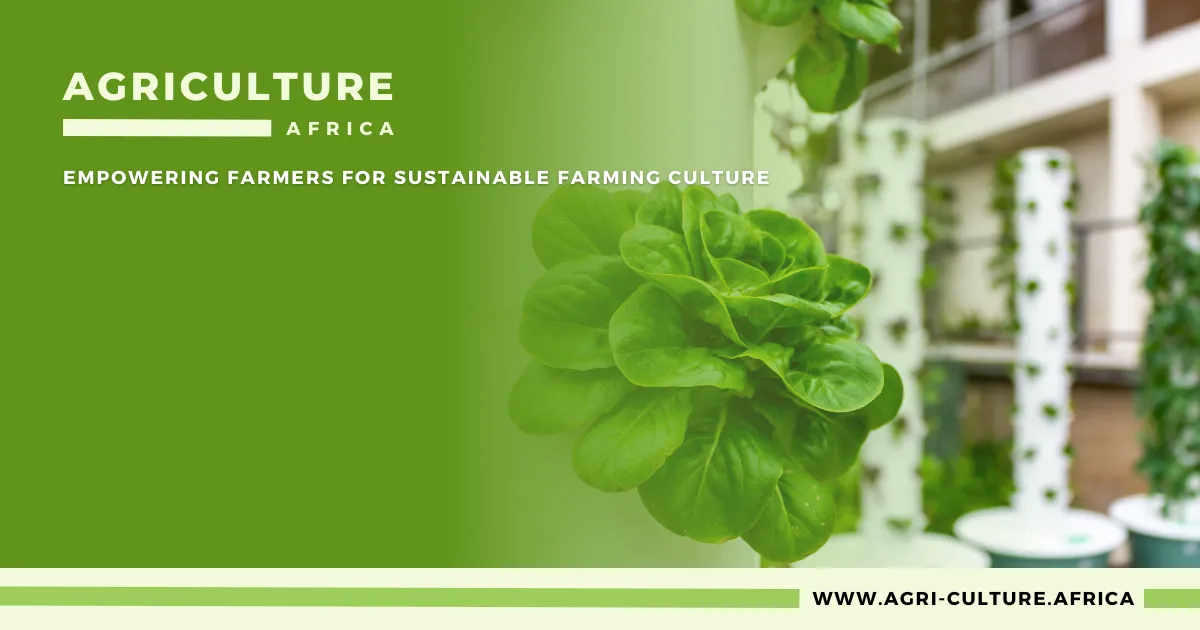
Empowering African Farmers for Sustainable Farming Culture
Hydroponic gardening is a sustainable and efficient method of growing crops in a small space that does not require soil. Hydroponic gardening, as opposed to traditional farming, allows for greater control over plant growth, nutrient delivery, and water usage. If you want to start a hydroponic garden, there are a few things you should think about. In this article, we’ll walk you through the process of creating and maintaining a hydroponic garden.
The first step in establishing a hydroponic garden is to find a suitable location. The location you select will affect the amount of light your plants receive as well as the availability of resources such as electricity and water. To ensure optimal plant growth, choose a location that receives at least 6-8 hours of sunlight per day. If this is not possible, you may need to invest in artificial lighting.
Indoor locations are more convenient and provide greater temperature and humidity control. Due to environmental factors such as temperature fluctuations and pest management, outdoor locations necessitate more planning and may necessitate more maintenance.
Once you’ve decided on a location, it’s time to select the hydroponic system that will work best for you. Hydroponic systems come in a variety of configurations, including deep water culture, nutrient film technique, and drip irrigation. Each system has advantages and disadvantages, and you should select one that fits your space, budget, and skill level.
Deep water culture is a simple and low-cost method of suspending plant roots in nutrient-rich water. A thin film of nutrient-rich water flows over the plant roots in the nutrient film technique. Drip irrigation uses a drip line to deliver nutrient-rich water to plant roots. Choose the system that best meets your needs and fits your budget.
Following the selection of the hydroponic system, the plants to be grown must be chosen. Growing crops such as leafy greens, herbs, tomatoes, cucumbers, and strawberries is ideal for hydroponic gardening. Begin with a few plants and gradually add more as you gain experience. To avoid overcrowding, leave plenty of space between plants.Link
Monitoring nutrient levels is one of the most important aspects of hydroponic gardening. To ensure optimal plant growth, nutrient levels must be carefully balanced. Measure the acidity of the water with a pH metre and adjust the pH level as needed. Measure the total dissolved solids in the water with a TDS metre and add nutrients as needed.
Commercially available nutrient solutions formulated for hydroponic gardening can also be used. However, you must ensure that the solution you use is suitable for the plants you are growing.
A hydroponic system must be cleaned and monitored on a regular basis. Clean the system on a regular basis to keep algae and other contaminants at bay. Examine the system for leaks and other problems that could impede plant growth. Every 1-2 weeks or as needed, replace the nutrient solution.
Hydroponic gardening is a sustainable and efficient way to grow fresh produce in a limited space. By following these simple steps, you can set up your own hydroponic garden and enjoy the benefits of fresh, healthy produce. With careful planning and regular maintenance, your hydroponic garden can be a source of fresh, healthy produce all year round.
Your donation fuels change! Help Agriculture Culture in Africa empower farmers with resources, training, and access to innovation. Together, we can revolutionize African agriculture.

Empowering Sustainable Growth and Innovation in African Agriculture
Sign up to our newsletter